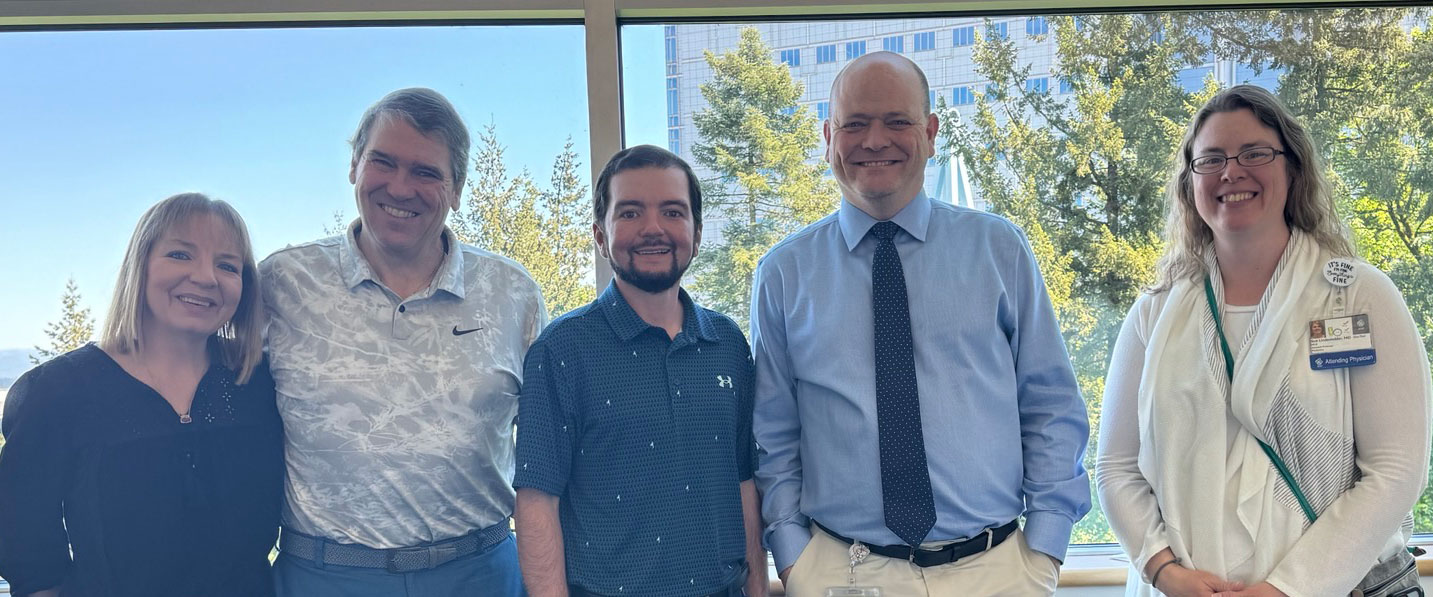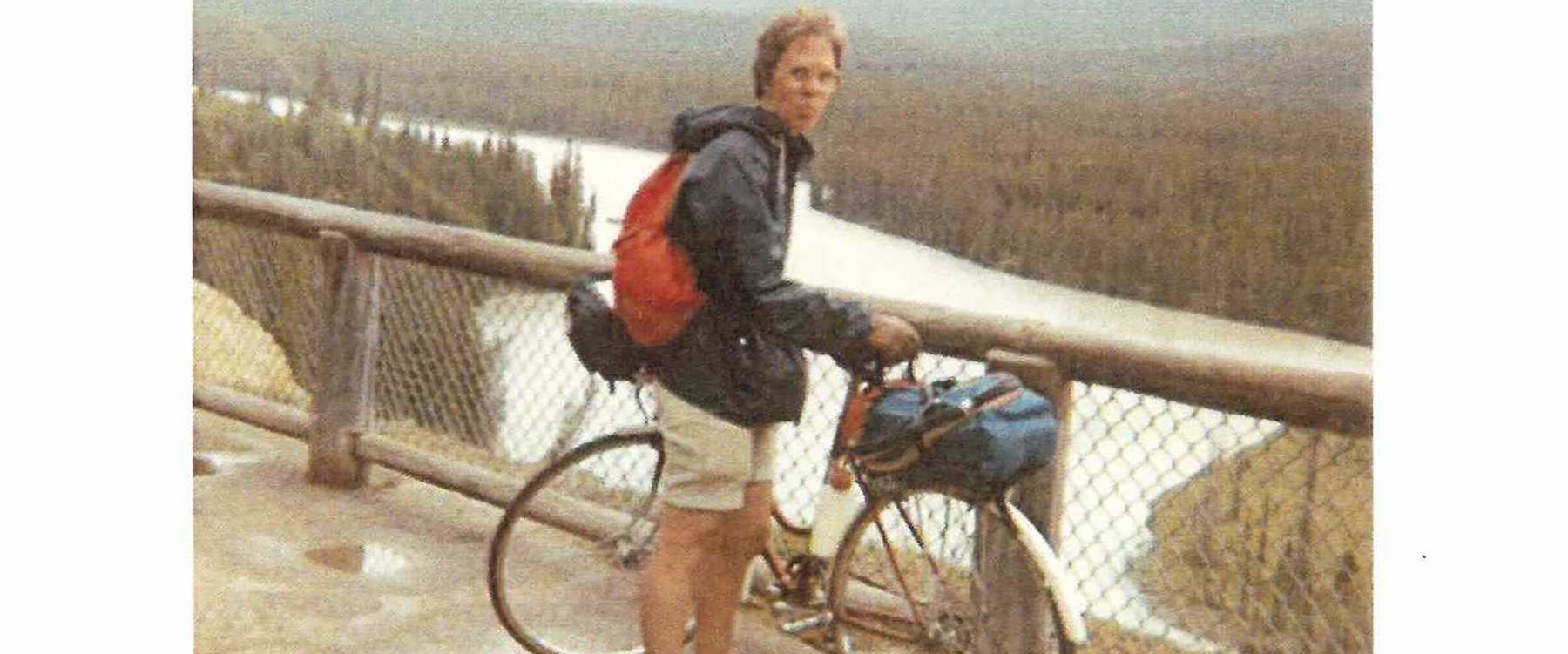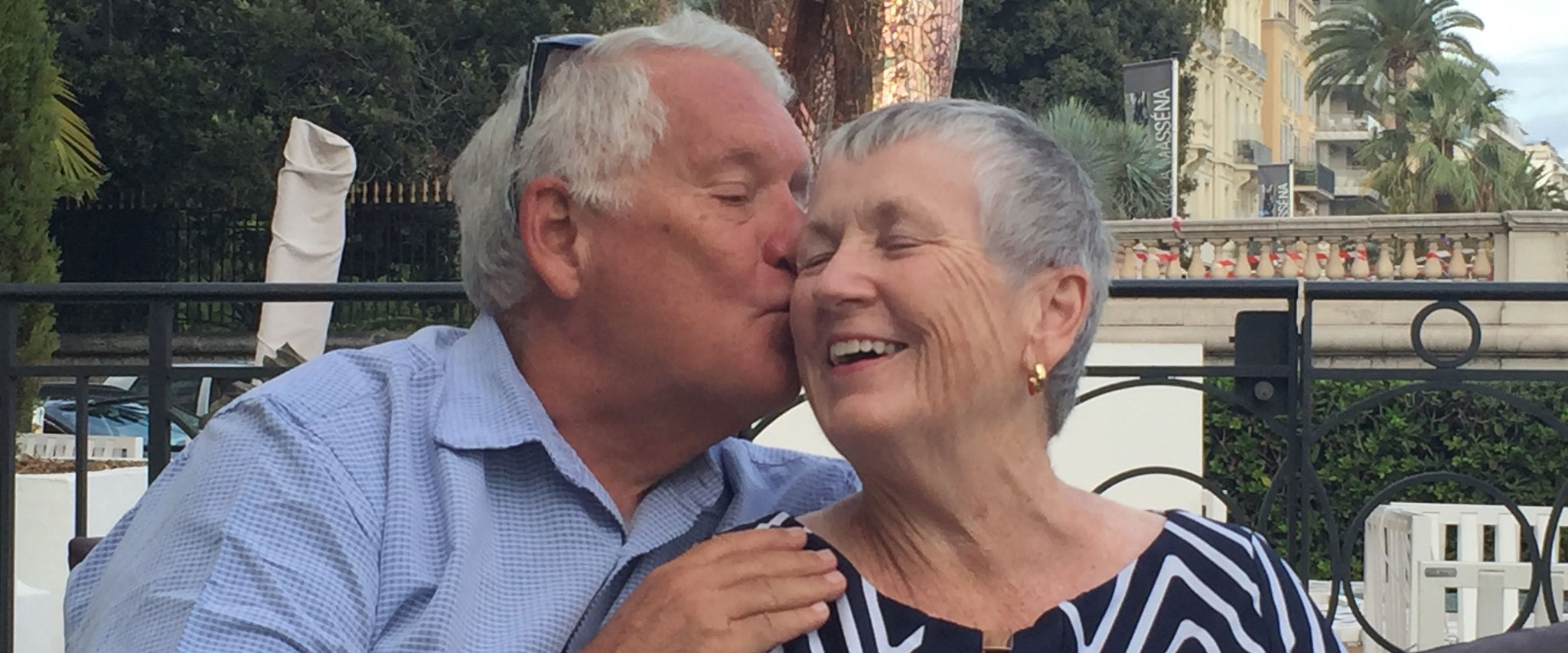By Darby Kendall
Twenty years after he first arrived at OHSU Doernbecher Children’s Hospital, Erik Paige returned as a survivor, his journey coming full circle. Nine-year-old Erik entered those hallways two decades ago at the beginning of his battle with leukemia. Now, they’re a reminder of his own strength and the support he received from his family and team at Doernbecher along the way.
Battling leukemia with bone marrow
On February 21, 2004, Erik was rushed to Doernbecher with his father, Jim. After being diagnosed with leukemia in Salem, Oregon, Erik spent several days in the ICU at Doernbecher and was then transferred to the pediatric oncology floor to settle into what would be his and his family’s new life for the next several months.
Even with the solid support of his care team at Doernbecher and two courses of chemotherapy, Erik’s condition worsened, and by June it was decided more action needed to be taken in order for him to make it through the summer.
“It was determined that in the little allotted time he had left, we needed to find a bone marrow donor that was the best possible match for Erik,” remembered his mother, Donette. “Erik’s odds of surviving were decreasing each day.”
In the nick of time, the National Marrow Donor Program (formerly Be The Match) found a match for Erik. He received the lifesaving transplant at the end of June. Erik recalls his nine-year-old imagination running wild before the procedure, picturing an intense surgery with dozens of doctors and medical methods. Even Donette remembers being surprised at how subdued the transplant was.
“In retrospect, we still giggle about it today because we thought the bone marrow transplant would be such a big production — ‘We Are the Champions’ would be playing and maybe a group of doctors would gather around the bed. But instead, we woke up to a nurse bringing in the bag of bone marrow in the middle of the night, then saying, ‘Game faces on; here we go!’ She proceeded to hang the bag, connect it to Erik’s IV and then inform us that she would be in and out every 30 minutes to monitor things,” Donette said.
“For these doctors and nurses, it was just another day on the pediatric oncology floor providing an uneventful yet lifesaving procedure for one of their patients. It’s what they do, day in and day out because of their true passion for the job and for their patients.”
Erik recovered from the transplant at Doernbecher and was able to go home after 16 days — a much shorter recovery time than usual, and a personal goal of Erik’s, who was eager for home after four months’ worth of the preceding leukemia treatments. At the time of his transplant, the Paiges didn’t know who had donated the bone marrow that saved Erik’s life, but they did sign the paperwork that would hopefully connect him to his donor one day.
“When I got matched up, at first, it was anonymous. We really wanted to meet whoever my donor was. Eventually, thanks to Be The Match, I got to meet him. That was an amazing experience,” Erik said. “To this day, we’ve met multiple times. He’s married and has kids now.”
A second struggle for health
After months in the hospital, Erik returned home and focused on resuming his daily life at school, with friends and watching sports. Then, that December, he woke up with a stabbing pain in his back and knew something was seriously wrong. Following his family’s rush to the Doernbecher, Erik was given an ultrasound scan, and everyone was surprised to learn that Erik was born with just one kidney and had an advanced form of chronic kidney disease.
“That was a shock for me, especially at that point, because I thought I was in the clear, like I could finally start putting things behind me and start moving forward. And I got dragged all the way back in,” Erik reflected.
The drugs associated with chemotherapy and bone marrow transplants can be harsh on kidneys; they are responsible for filtering out the byproducts of these drugs, which can lead to cell damage. Because Erik was born with only one kidney, it had taken the complete brunt of the filtering side effects.
Thankfully, Erik’s injuries were caught before the kidney function worsened, and he was immediately placed under the care of David Rozansky, M.D., Ph.D., in the nephrology division at Doernbecher. For the next eight years, Erik saw Rozansky for his kidney care, and the two developed a unique patient-provider report. “Those are the visits that I always looked forward to and always had a lot of fun at,” Erik reflected.
Experiences that inspired giving
The relationships Erik and his family built with the people at Doernbecher over his near decade of receiving care left a lasting impression on all the Paiges. No parent wants to see their child in a hospital, but Donette found solace in the fact that her son was well taken care of.

“All the doctors and nurses seemed to know all of Erik’s medical history and anytime something came up, I felt comfort in knowing he was under the best care in the state. It was like it was written on the backs of their hands. Anytime I had questions or concerns, they would spend time answering them and making sure I understood what they were saying or doing, and I never felt rushed,” she said. “Doctors, nurses and other parents knew you by name, and it was if you were surrounded by family in a sense.”
Erik’s grandparents, Judith and Peter Paige, spent a lot of time watching over him during his leukemia treatment, and they also saw the important impact from Doernbecher staff and providers. They were inspired to give back after seeing Erik’s care and decided to make a major outright and planned gift in their estate through the OHSU Foundation. The Erik Paige Endowment for Excellence in Pediatric Oncology now benefits pediatric oncology at Doernbecher Children’s Hospital.
“My grandparents were like second mothers and fathers to me. They spent time with me in the hospital, giving my parents breaks and entertaining me. I spent a lot of time with my grandparents, and they kept a lot of articles about me, like my Make-A-Wish story that came out in the paper,” Erik said. “I think for them, it was important to help others in any way they could, because they saw how scary it was for my parents and myself. It was an opportunity for them to leave a lasting legacy to help others. They were really generous in trying to support all the cancer causes that they could. It was something we talked about a lot while they were still alive. I’m very grateful to have the grandparents I did.”
Looking back on her family’s motivation to make the gift, Donette said they saw an opportunity to help provide future patients with the same level of dedicated and coordinated care Erik received 20 years ago. The endowment currently helps train the next generation of pediatric oncologists and supports Doernbecher’s missions of healing and discovery in pediatric oncology.
“It is the hope that with this endowment, Doernbecher will continue to attract top level pediatric doctors and with the endowment they can further their skills and knowledge,” Donette said. “We want to help their national status to continue, so that future patients have the highest chances with the best doctors on their side to beat childhood cancer and blood disorders.”
The coordination of care across multiple disciplines when it came to Erik’s treatment was a main motivator for the Paiges to donate specifically to Doernbecher. Erik’s care team, including Bill Chang, M.D., Ph.D., and Susan Lindemulder, M.D., M.C.R., are both still at the hospital, helping the next generation of children with their health. When Erik was diagnosed in 2004, Stephen Roberts, M.D., was just starting at the hospital as a fellow, and he is now the Robert C. Neerhout Chair of Pediatric Oncology and division head for Pediatric Hematology and Oncology at Doernbecher. Roberts was instrumental in helping the Paiges make the greatest positive impact with their endowment.
“The support of this endowment is really necessary,” said Roberts. “It helps us bridge the gap between funding that’s available through typical hospital resources and the needs that we have when it comes to benefiting the whole care of patients.”
When Erik and his parents returned to Doernbecher in 2024 to see the positive impact of the endowment, they walked down the hallways filled with memories, while catching up with the doctors who helped save his life. Now, they look to the future with the Erik Paige Endowment for Excellence in Pediatric Oncology, a fitting circle on the life-changing journey the entire family went on.
Reflecting on his time receiving cancer treatment at Doernbecher, though Erik went through much struggle those 20 years ago, he’s grateful for the care he received and the outlook it all gave him in life.
“When you go through two things like that as a kid, you get the ability to fight off adversity and fight through it; that’s helped me a lot in everyday life,” Erik reflected. “It’s also helped me appreciate the small things in life, like spending time with my family and friends. There’s a lot more value in that for me nowadays. As much as those times were dark and scary, there were also great times too. It taught me to spin things into a positive mindset.”




